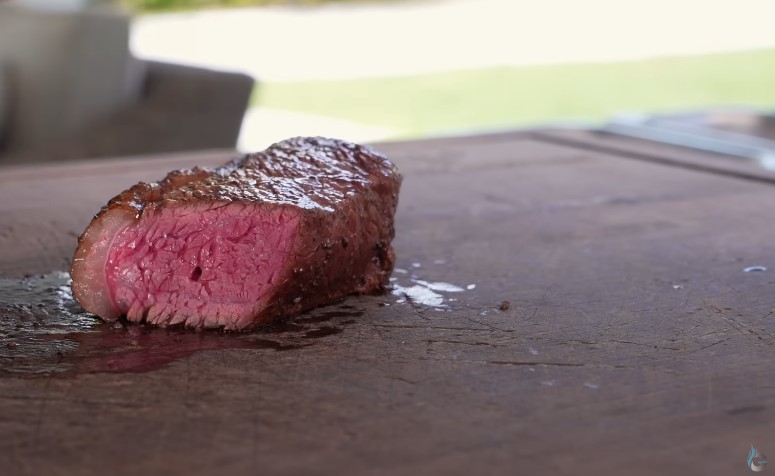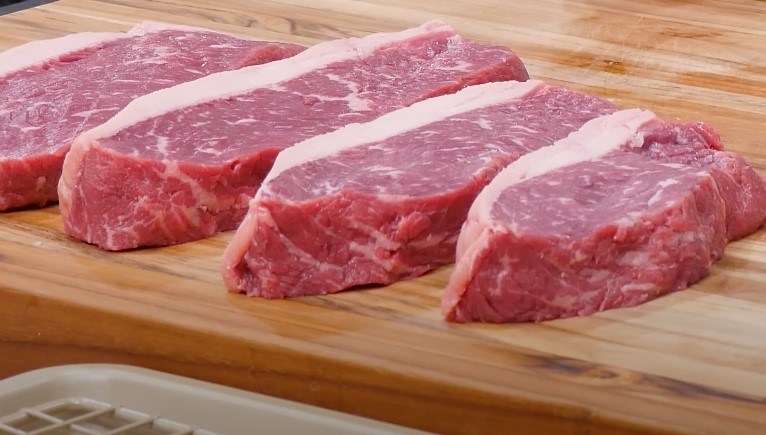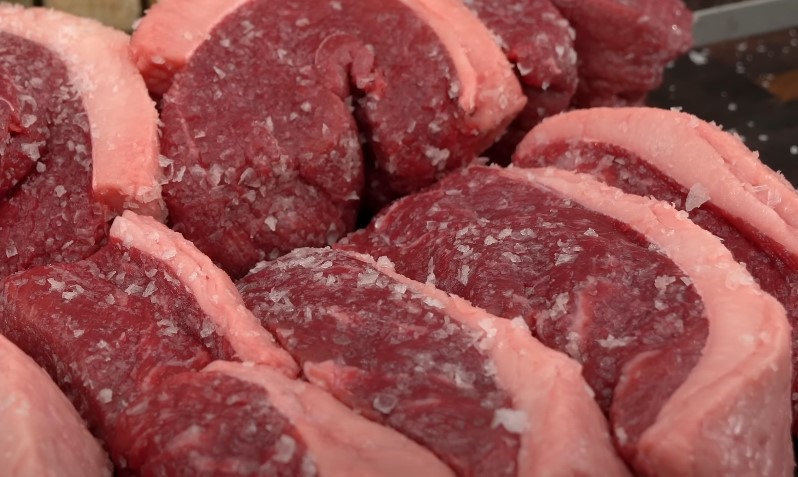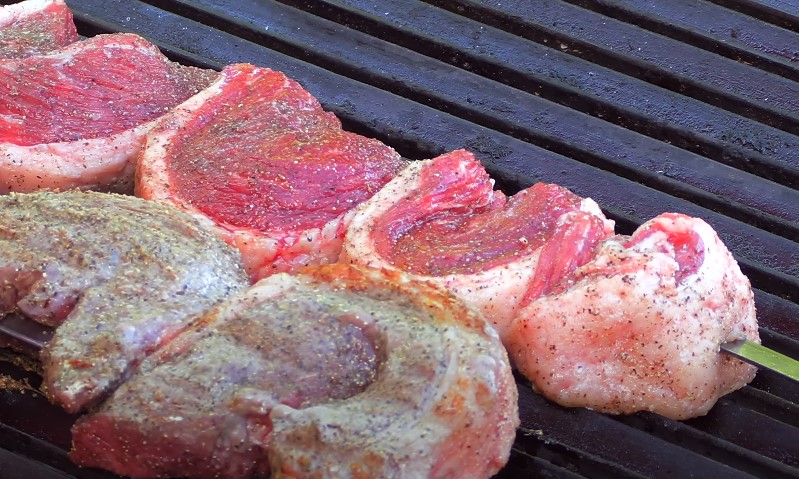If you’ve ever sat in a Brazilian steakhouse and watched skewers of beef arrive at the table, glistening under a layer of salt and fat, you’ve seen picanha. Servers shave off slices with theatrical precision, and every bite seems juicier than the last.
But, if you go to a neighborhood butcher in the U.S. and ask for picanha, chances are they’ll hand you something labeled top sirloin cap , coulotte , or rump cap . Same muscle, different names, and sometimes, a very different eating experience.
So which is better: picanha or sirloin cap? The short version is that they are the same cut, but how it’s butchered, labeled, and cooked changes everything.
Let’s break it down with some clarity, a bit of meat science, and plenty of practical cooking advice.
The Quick Answer Up Front
Picanha and sirloin cap are the same muscle, taken from the top of the sirloin. The key difference is treatment.
Brazilian picanha is left whole, with its fat cap intact, skewered into a C shape, and cooked over live fire before being sliced.
In the U.S., the same muscle is often portioned into steaks or sold as a coulotte roast, and it may be trimmed leaner for retail appeal.
The closer your purchase is to a whole triangular cap with its fat layer intact, the closer you’ll get to the Brazilian churrasco experience.
One Muscle, Many Names
Before we weigh cooking styles or flavor preferences, it helps to know exactly what we’re dealing with.
- USDA IMPS Code: In the U.S., the official designation is IMPS/NAMP 184D , “Beef Loin, Top Sirloin Butt, Cap.” That’s the technical spec used by packers and distributors. If you ask a butcher for IMPS 184D, you’re speaking their language.
- Retail Names in the U.S.: Coulotte roast, coulotte steak, or top sirloin cap are the common consumer-facing labels.
- International Names: In Australia and the UK, it’s called rump cap or rump cover . In Brazil, of course, it’s picanha .
- Restaurant Lingo: In churrasco culture, the fat cap is considered essential. The cut is roasted whole or in chunks, then sliced thin tableside.
Where It Sits and Why It Tastes So Good

The sirloin cap rests atop the top sirloin. It’s a triangular cut with a visible grain and a natural fat cap.
- Moderate muscle use: It isn’t as tough as brisket or shank, but it has more character than tenderloin. That balance gives it a beef-forward flavor with a pleasant chew.
- Built-in fat cap: The fat slowly bastes the meat during cooking, infusing richness and keeping the beef juicy. When properly seared, the fat contributes a nutty, savory edge that churrasco is famous for.
Why Picanha Often Feels Different
If picanha and sirloin cap are the same, why do they sometimes feel so different on the plate? A few practical reasons:
1. Trimming and Fat Cap Thickness
Brazilian tradition keeps a fat cap about 1.5 cm thick. In the U.S., retail versions are often trimmed leaner, or the cap is removed entirely. Less fat means less self-basting and a leaner bite.
2. Whole Roast vs. Pre-Cut Steaks
Picanha is usually roasted whole or in big chunks. In U.S. markets, the cap often appears cut into steaks. Whole roasts allow for dramatic slicing and even fat rendering. Steaks cook faster but lean more toward strip steak behavior.
3. Grading and Marbling
USDA Prime caps show better marbling than Choice or Select. Premium picanha purveyors highlight this, since marbling plus fat cap equals tenderness and juiciness.
4. Regional Cutting Styles
Australian and UK butchers break down the rump differently, but rump cap remains a distinct, recognizable cut. Knowing local terminology is half the battle when shopping.
Buying Checklist & How to Spot a Great Cap

When shopping, precision matters. Here’s a quick playbook:
- Ask for IMPS 184D or “top sirloin cap with fat cap on.”
- Target weight: About 2 to 3 pounds (0.9 to 1.4 kg). Much larger pieces may include adjacent muscles.
- Inspect the fat: Look for a uniform 1–2 cm cap. Too thin and you’ll lose that Brazilian magic.
- Check grade and marbling: Prime or high Choice will reward you with tenderness.
Cooking Methods
With the right cut, you can cook it three main ways depending on style and portioning.
Method A: Brazilian-Style Skewered Roast
- Cut the cap into three or four strips, fold into a C, skewer, and salt heavily.
- Roast over live fire or rotisserie until crusty and golden.
- Slice the seared outer layer, return to heat, repeat.
Method B: Reverse Sear for Evenness
- Salt and refrigerate uncovered for several hours.
- Roast low at 225–275°F until nearly done.
- Finish with a sear in a skillet or over direct heat.
- Produces an evenly rosy interior with a crisp crust.
Method C: Sirloin Cap Steaks
- Sear over high heat for 1–2 minutes per side.
- Finish over indirect heat or in the oven until at temp.
- Works like a leaner strip steak with a strong beef flavor.
Don’t Forget the Fat Cap

Tempted to trim it off? Don’t. Keep it on, score it lightly, and let it render. The fat is what separates an ordinary sirloin roast from a picanha worth bragging about.
Slicing Technique
The cap has a pronounced grain. Always slice against the grain. That single step can be the difference between a buttery bite and a chewy one. In churrasco service, shaving thin slices as the exterior crisps naturally shortens the fibers and boosts tenderness.
Comparative Tasting Notes
| Style | Texture & Flavor | Best For |
| Whole picanha roast | Juicy, beefy, nutty fat edge | Dinner parties, rotisserie drama |
| Sirloin cap steaks | Beefy, leaner, quick cooking | Weeknight grilling, mixed platters |
| Rump cap (AUS/UK) | Similar to picanha when cap is intact | Roasts, thick steaks |
Price and Availability
@meatdad Replying to @darchery8242 I admit it I’ve done it I have ground the tri-tip I have ground the ribeye I have ground the sirloin cap they are good but I found no difference between grinding a top sirloin steak with a little extra fat and grinding the Pacania. Save yourself the heartache and save me the heart ache! Just a little effort is all I ask! #meatdad #meat #burger #sirlon#moneysavingtips #foodporn #teachersoftiktok
In most U.S. grocery stores, ribeye and strip dominate the display, while sirloin cap often hides under the name coulotte .
Specialty butchers and online meat purveyors carry it more reliably, often at a lower price point than ribeye, while still delivering impressive flavor and presentation.
Which Is Better?
There’s no contest between picanha and sirloin cap, as they’re the same cut. The “better” version depends on how you cook it and what you want out of the meal.
- Choose picanha style: Whole roast, fat intact, live fire or reverse sear. Best when you want drama, rich flavor, and that authentic Brazilian touch.
- Choose sirloin cap steaks: Pre-cut, easy to grill, great for fast weeknight meals.
Foolproof Picanha at Home
- Buy a 2–3 pound cap with intact fat (IMPS 184D).
- Season with kosher salt and refrigerate uncovered overnight.
- Roast at 225–275°F until 10–15°F below target.
- Sear over high heat until browned and crisp.
- Rest 3 minutes, slice against the grain, serve with chimichurri.
FAQs
The Final Verdict
Picanha and sirloin cap are two names for the same cut. What separates them is cultural tradition, fat cap treatment, and cooking style.
If you want the rich churrasco bite, buy the full cap with its fat intact and roast or grill it whole. If convenience rules your kitchen, sirloin cap steaks give you a fast, flavorful option.
Either way, shop smart, respect the fat, cook with control, and slice against the grain. That’s how you unlock the best of this underrated cut.
